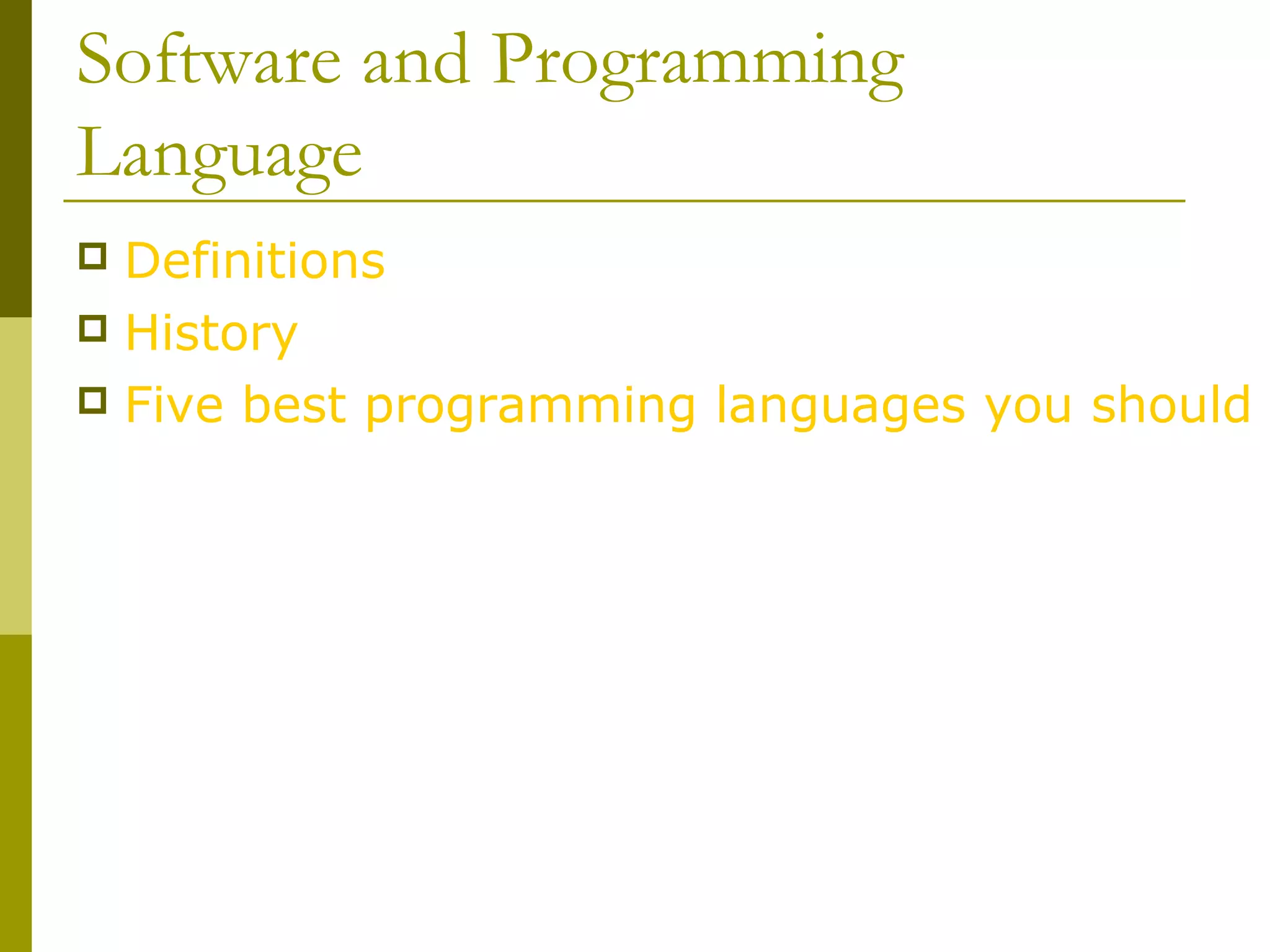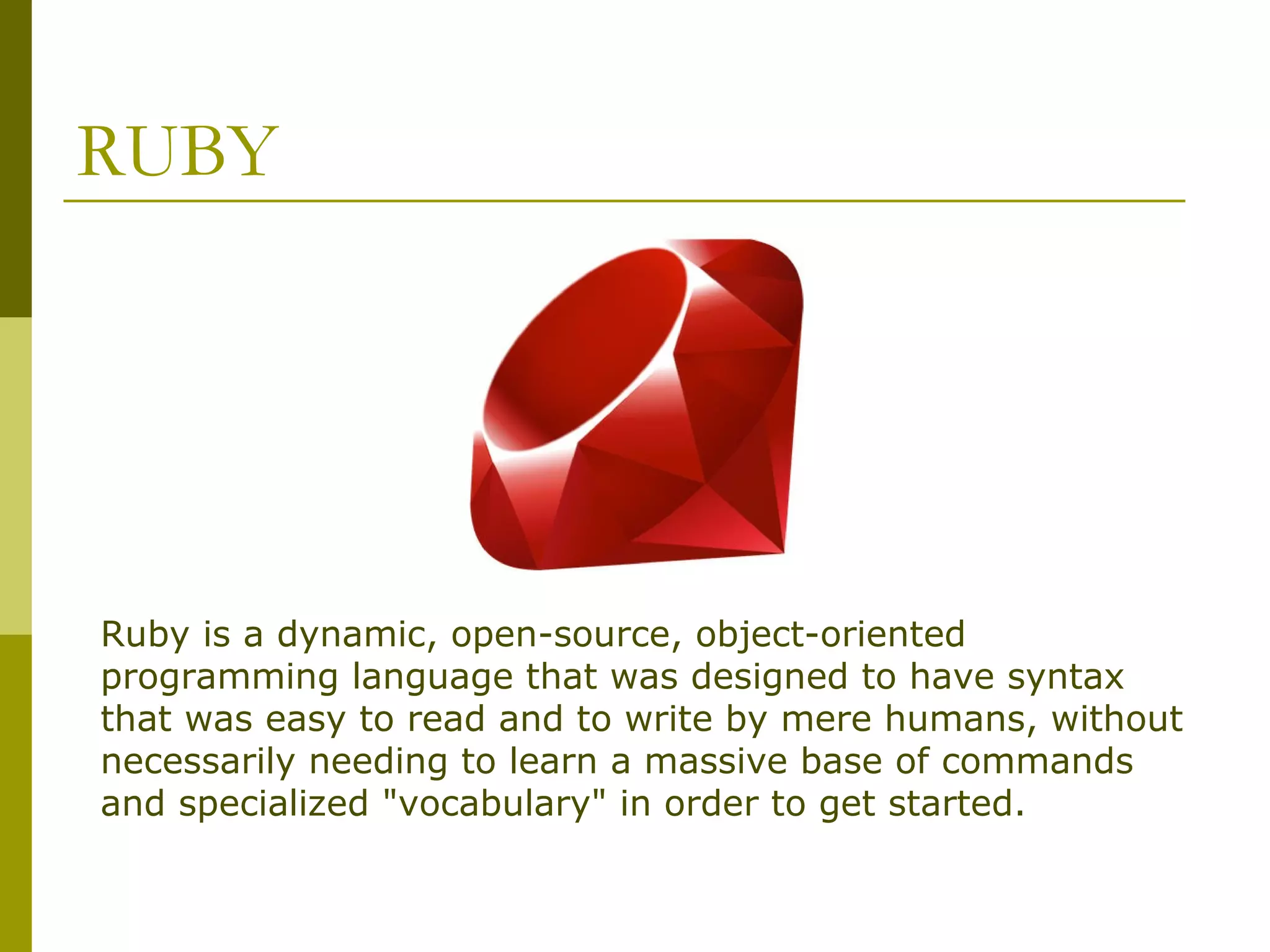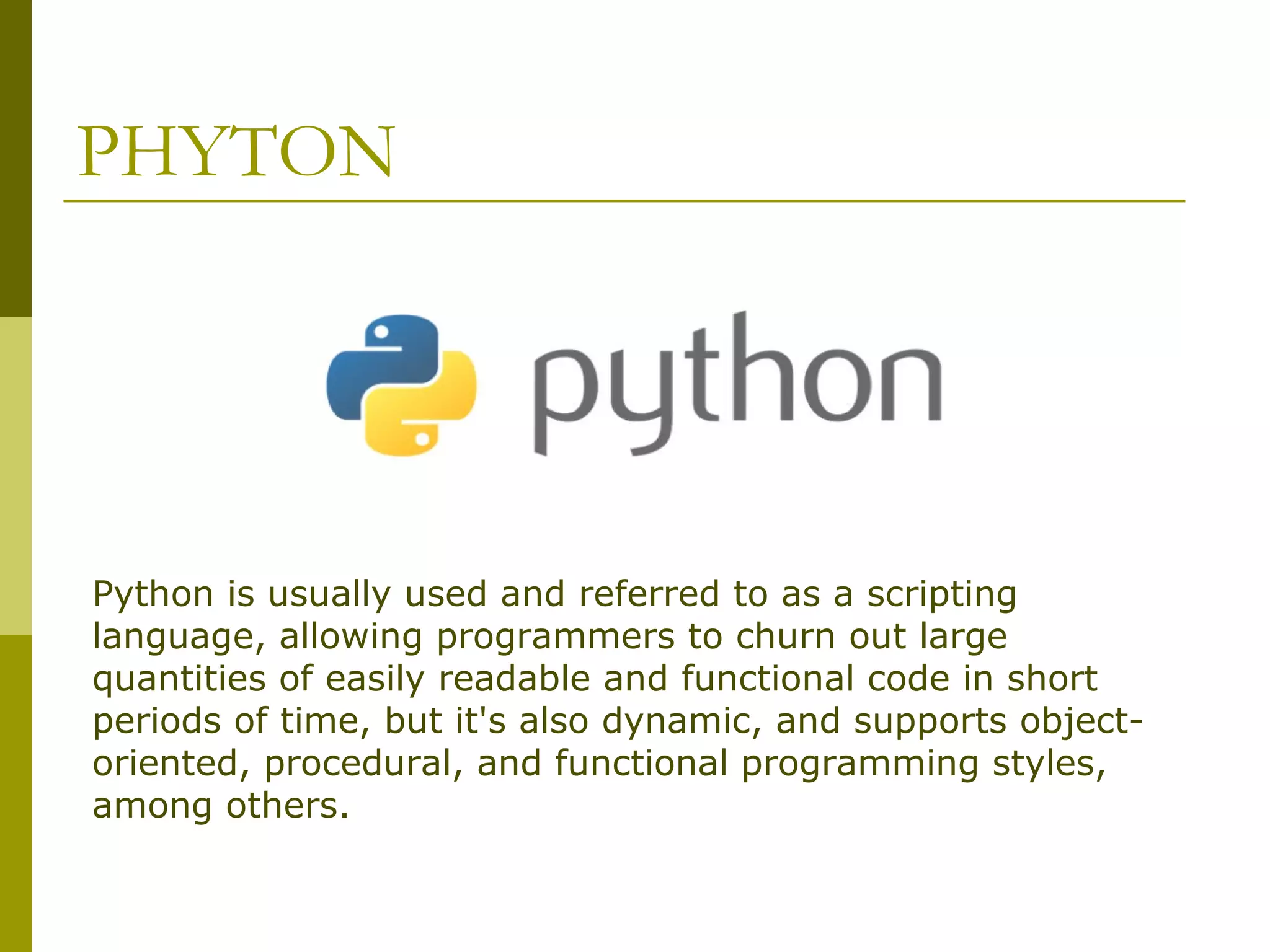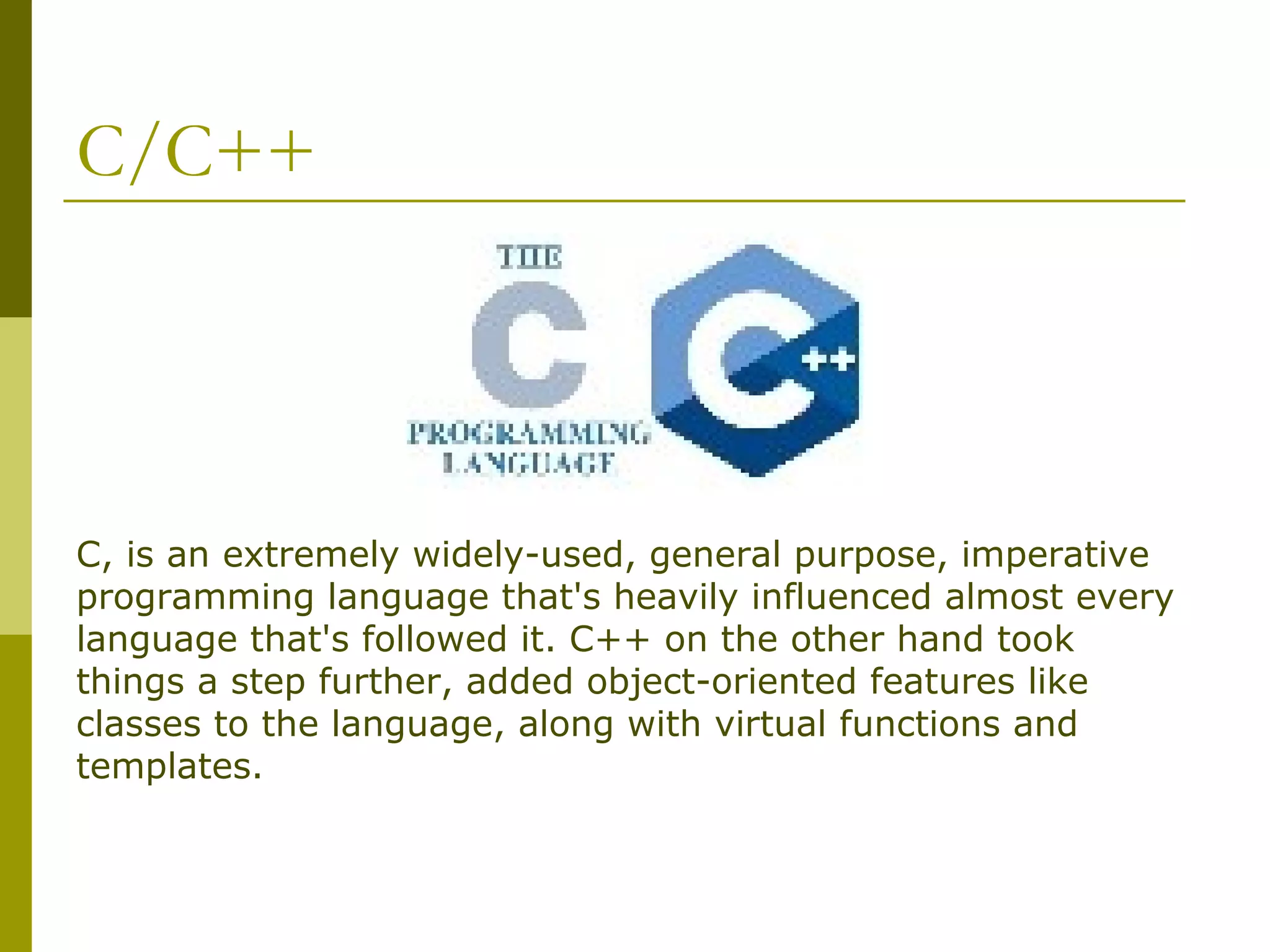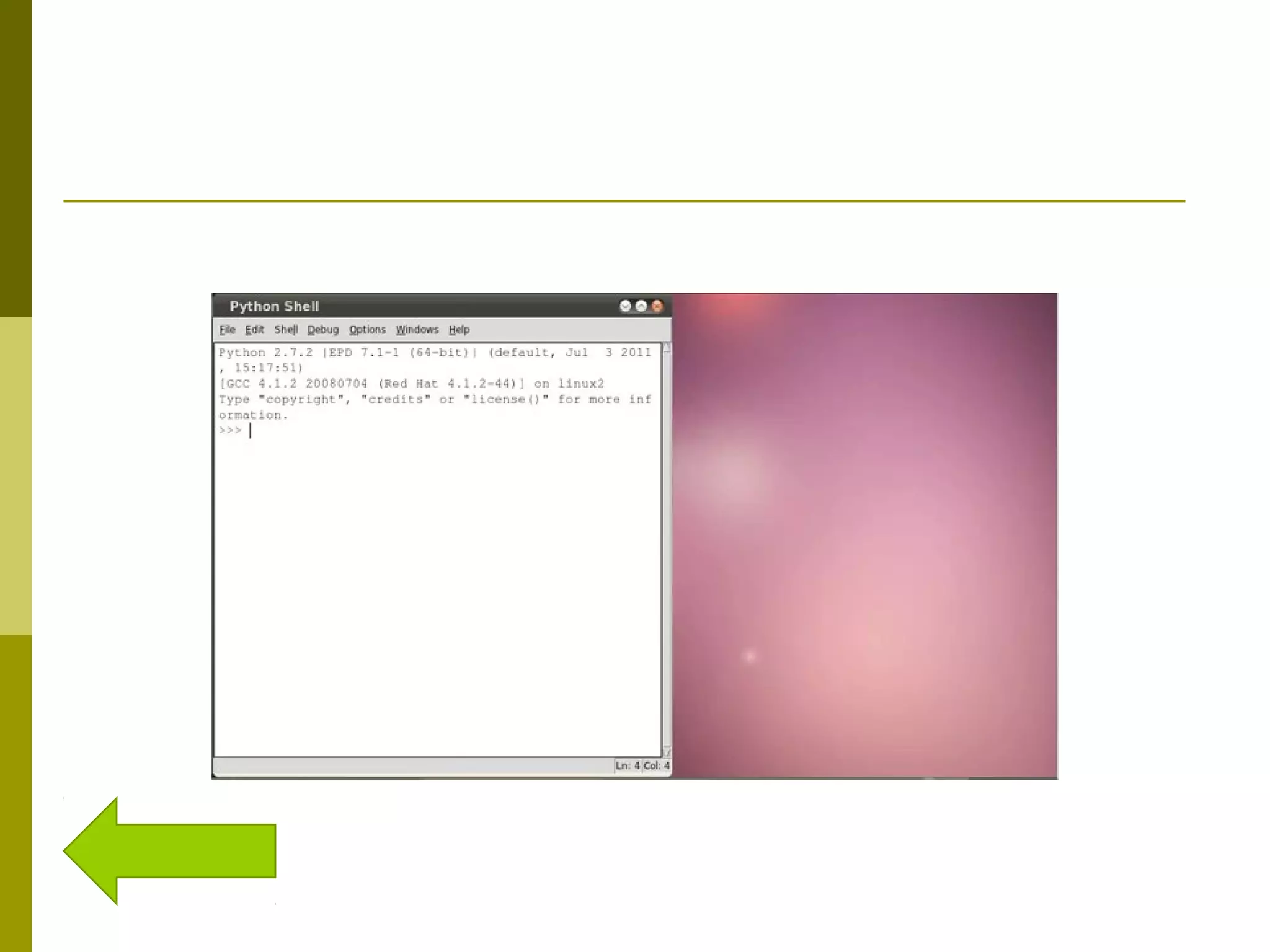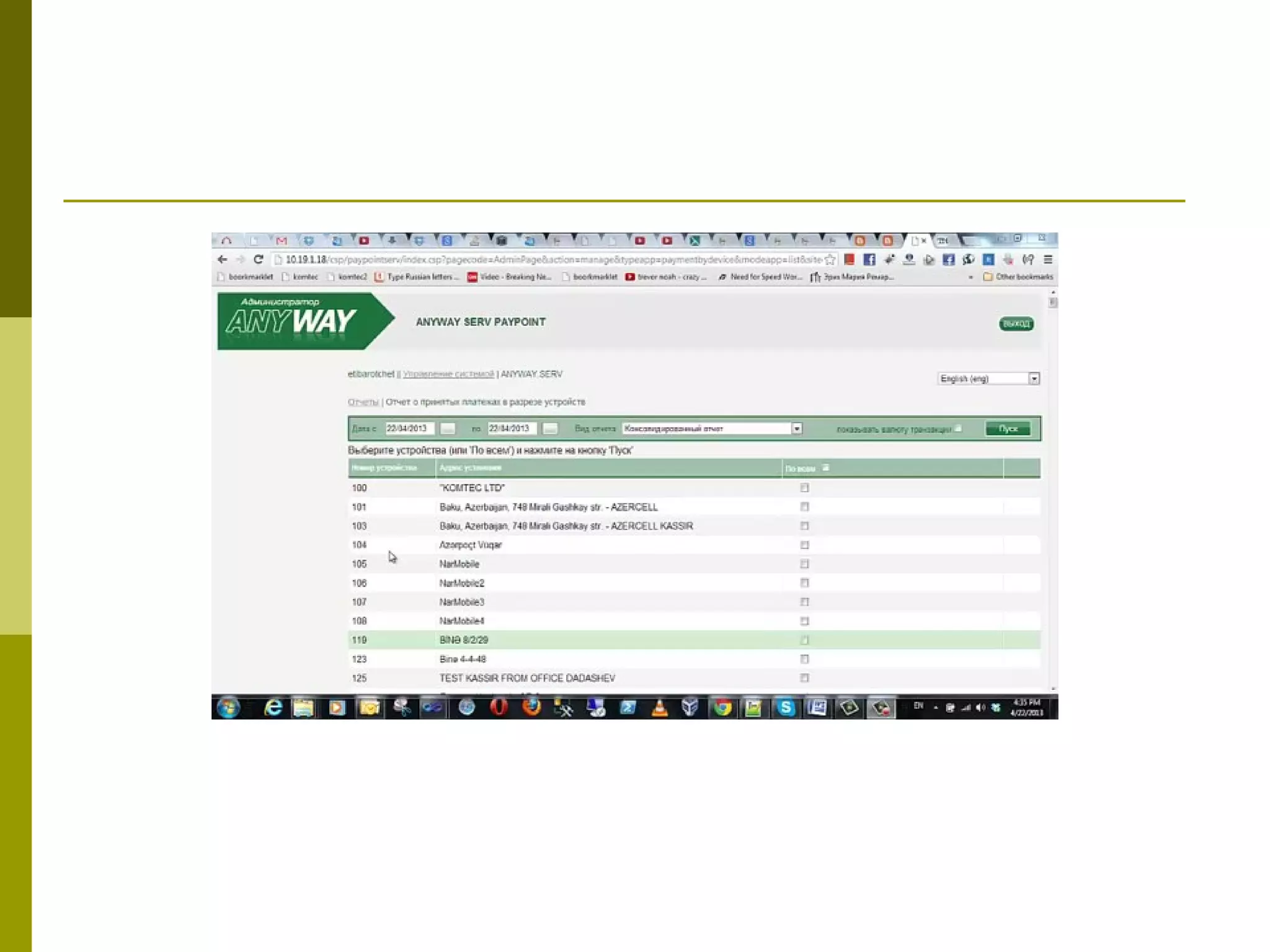This document provides definitions and history of programming languages and summarizes the five best programming languages to learn. It defines a programming language as a notation for writing computer programs and algorithms. The first programming languages were developed in the 1950s to communicate instructions to computers. Major programming language paradigms like APL, ALGOL, and C emerged from the 1960s to late 1970s. The five best programming languages highlighted are Java, Ruby, Python, C/C++, and JavaScript.

